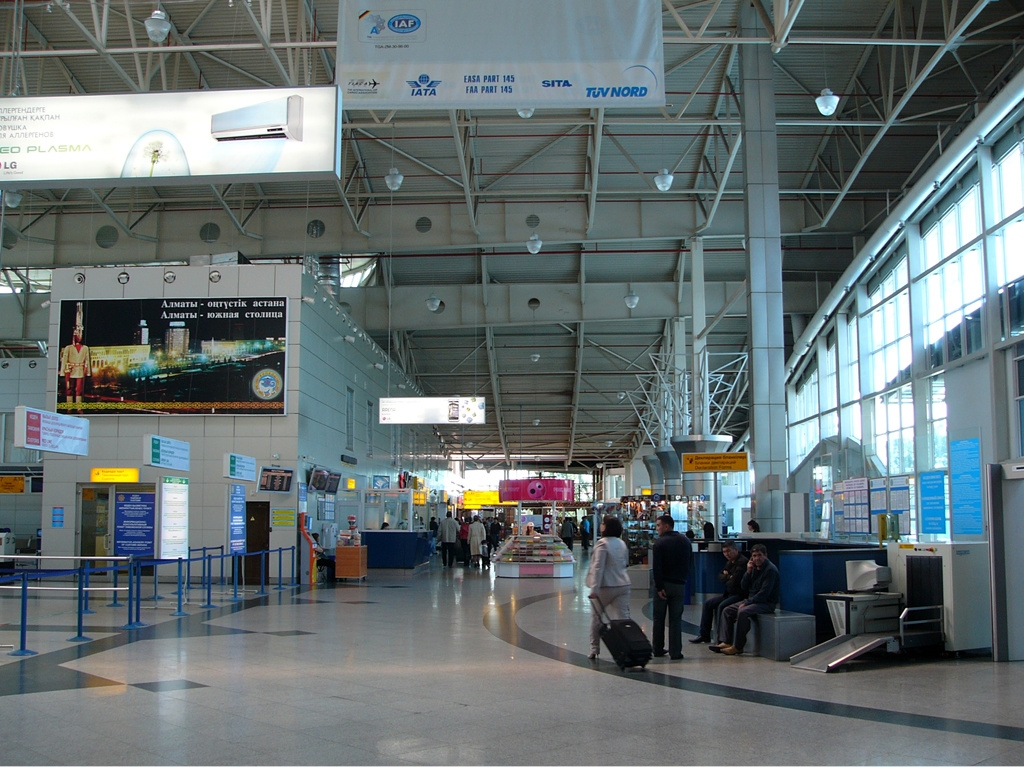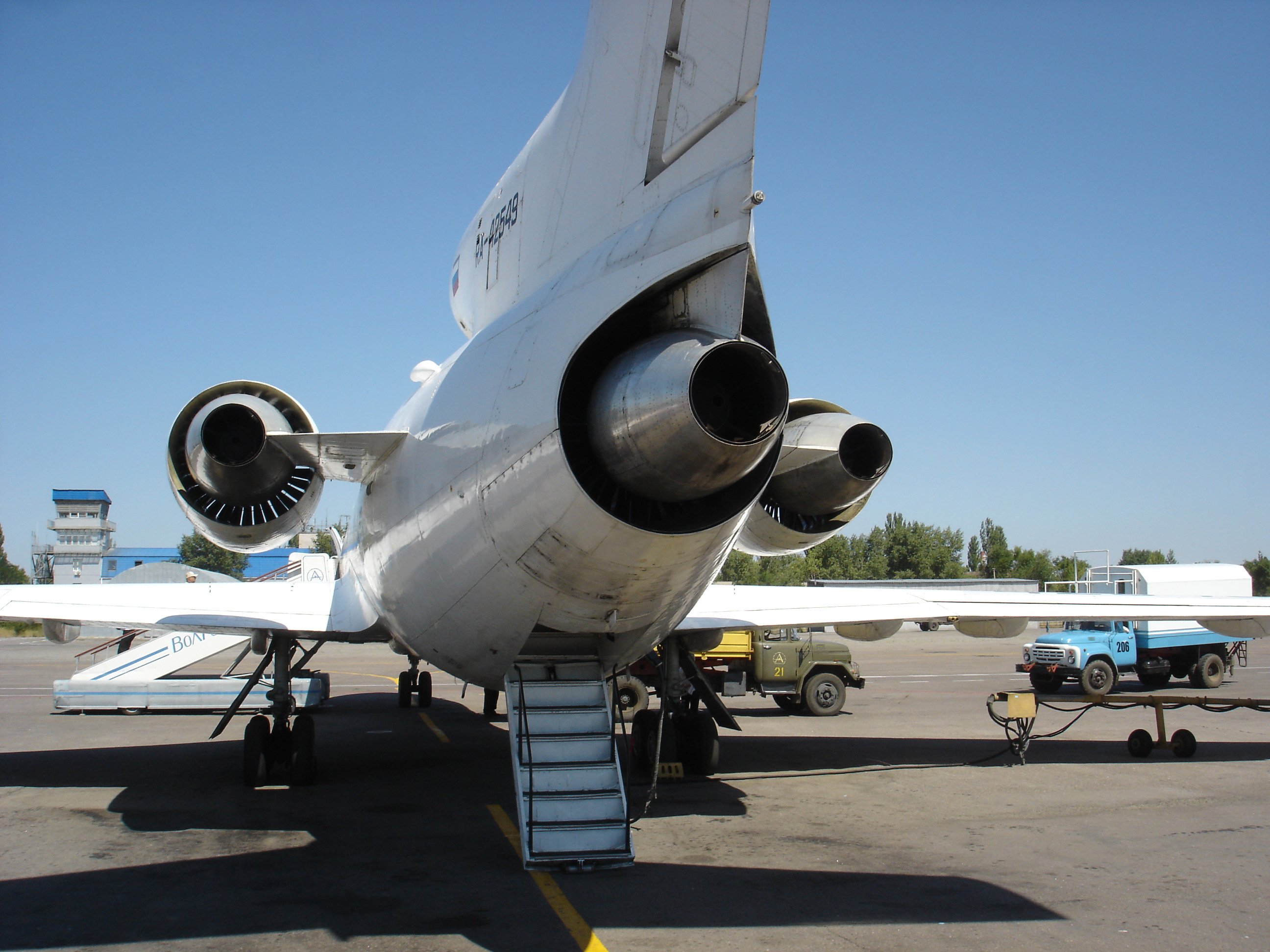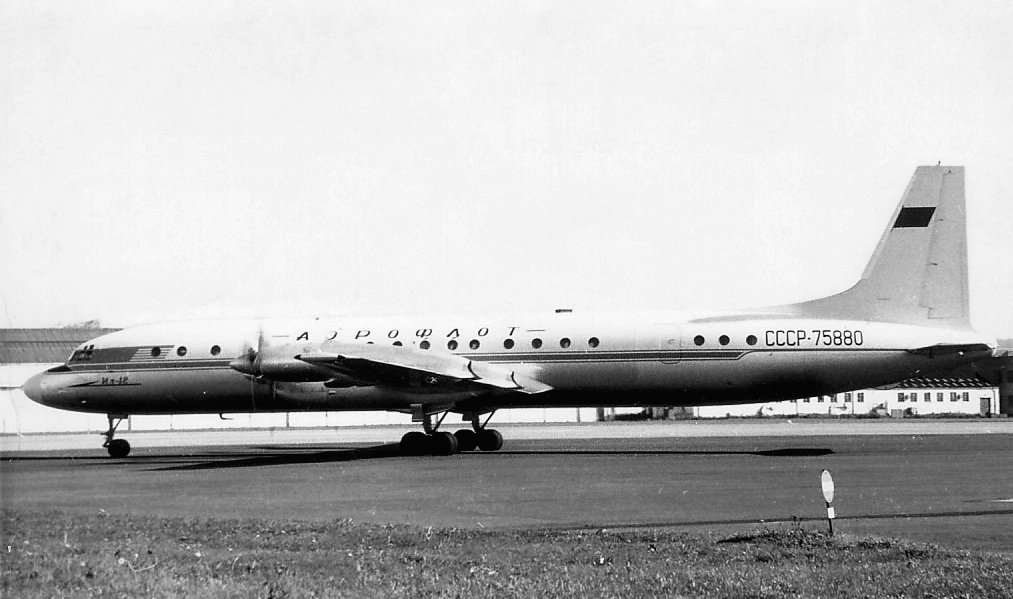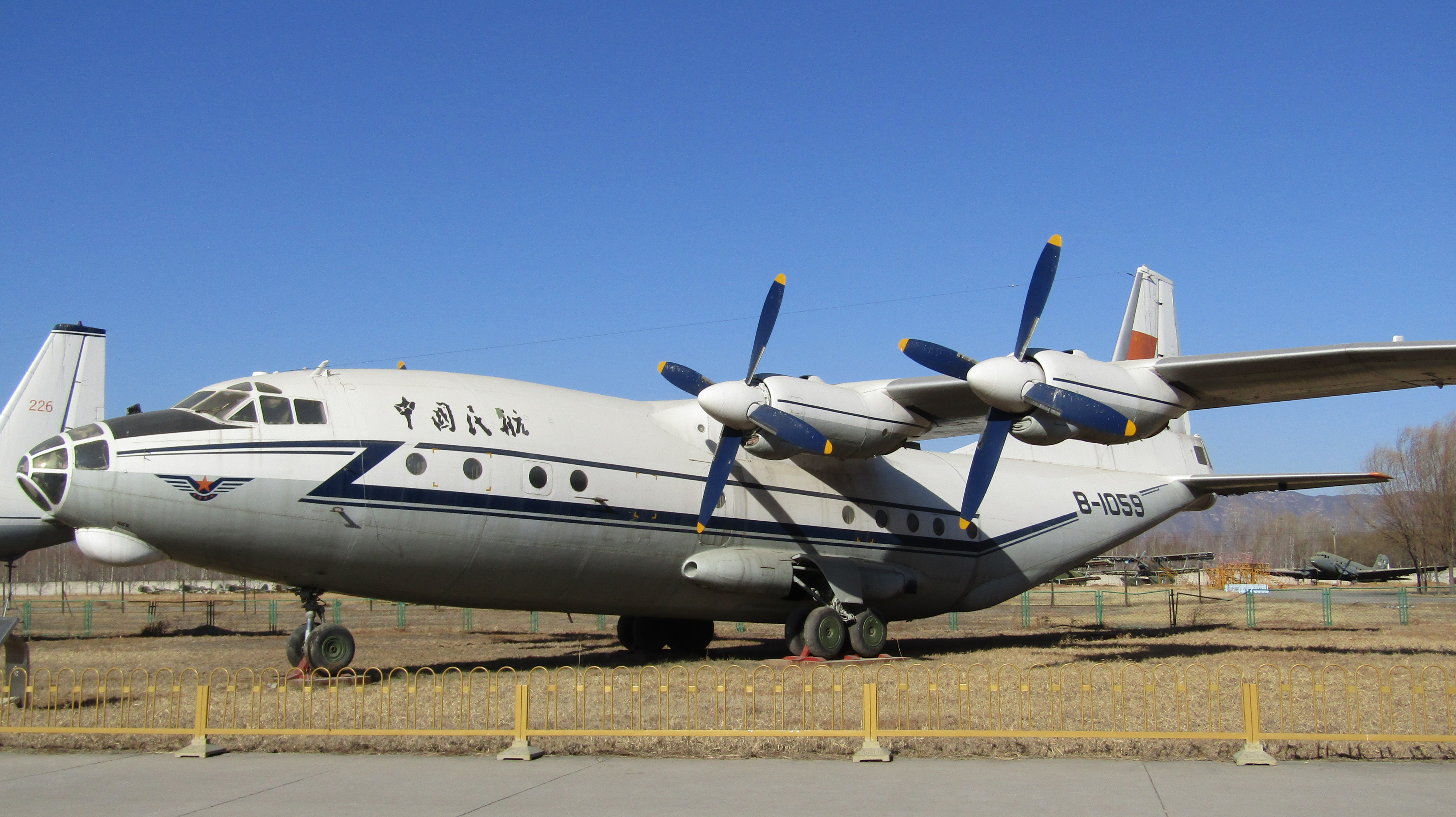|
Balkhash Airport
Balkhash Airport ( kk, Балқаш Әуежайы / ) is an airport northeast of Balkhash, Kazakhstan. Overview Balkhash Airport is classified as a national aerodrome in the latest AIP. It is capable of accepting Ilyushin Il-76, Tupolev Tu-134, Tupolev Tu-154, Antonov An-8, Antonov An-12, Antonov An-24, Ilyushin Il-14, Ilyushin Il-18, Yakovlev Yak-40, Yakovlev Yak-42, and Antonov An-2 The Antonov An-2 ("kukuruznik"—corn crop duster; USAF/DoD reporting name Type 22, NATO reporting name Colt) is a Soviet mass-produced single-engine biplane utility/agricultural aircraft designed and manufactured by the Antonov Design Bure ... aircraft. It can also accept light aircraft and helicopters of all types. The length of the runway is . A dirt runway was also used in the past, but it is now closed. Military aircraft are also based there. In the last few years, civil aircraft rarely use this airport and the airport is mainly used by the sky diving club of the city of Balkhash ... [...More Info...] [...Related Items...] OR: [Wikipedia] [Google] [Baidu] |
Balkhash (city)
Balkhash ( kk, Balqaş, بالقاش; russian: Балхаш, Balkhash) is a city in Kazakhstan, located on the northern shore of the Lake Balkhash, on the Bay Bertys, and in south of Kazakh Uplands. Population of the city: Balkhash was founded in 1937 as an industrial city centred on the mining and smelting of copper, and presently copper is still exploited there. The city lies approximately 500 km west of the Chinese border on the north side of the lake at an altitude of 440 m. The history of the city is closely connected with mining of deposits of copper and development of a smelting plant. History On 11 April 1937, a small worker's settlement "Pribalhashstroy", designed in connection with the construction of a copper factory - BGMC, was transformed into the city of Balkhash by decision of the Central Executive Committee of the Kazakh SSR. In this way, the copper factory affected the city's appearance. On 9 November 1932, the first school was established in the cit ... [...More Info...] [...Related Items...] OR: [Wikipedia] [Google] [Baidu] |
Ilyushin Il-14
The Ilyushin Il-14 (NATO reporting name: Crate) was a Soviet twin-engine commercial and military personnel and cargo transport aircraft that first flew in 1950, and entered service in 1954. The Il-14 was also manufactured in East Germany by VEB Flugzeugwerke as the VEB 14 and in Czechoslovakia as the Avia 14. The Ilyushin Il-14 was typically replaced by the Antonov An-24 and Yakovlev Yak-40. Design and development The Il-14 was developed as a replacement for the widespread Douglas DC-3 and its Soviet built version, the Lisunov Li-2. A development of the earlier Ilyushin Il-12, (that first flew in 1945), the Il-14 was intended for use in both military and civil applications. The Il-12 had major problems with poor engine-out behaviour. Also, it had less payload capability than was originally planned (although the Il-12 was intended to carry 32 passengers, in service it only carried 18, which was uneconomical). The development into the Il-14 was a vast improvement over the Il-12 ... [...More Info...] [...Related Items...] OR: [Wikipedia] [Google] [Baidu] |
Almaty International Airport
Almaty International Airport ( kk, Halyqaralyq Almaty Äuejaiy) is a major international airport northeast of Almaty, the largest city and commercial capital of Kazakhstan. It is the busiest airport in Kazakhstan, accounting for 6.42 million passengers in 2019. Owners and management The airport is registered under name of "JSC Almaty International Airport", which is owned by Turkish airport company TAV Airports Holding, as well as many other airports available worldwide. History Early years The airport was built in 1935 for use by small civil and military aircraft. Up to 1990, it was the part of Kazakh Department of Civil Aviation, and then reorganized into "Alma-Ata Airport" in 1991. Since 1993, it has run as an independent business unit. In 1994, it was reorganized into OJSC "Almaty Airport" and later renamed to JSC Almaty International Airport. The supersonic transport (SST) Tupolev Tu-144 began service on 26 December 1975, flying mail and freight between Moscow and ... [...More Info...] [...Related Items...] OR: [Wikipedia] [Google] [Baidu] |
SCAT Airlines
SCAT Airlines, legally PLL SCAT Air Company, is an airline with its head office on the property of Shymkent International Airport in Shymkent, Kazakhstan. It operates services to all of the major cities of Kazakhstan and to neighbouring countries. Its main base is Shymkent Airport, with focus cities at Aktau International Airport, Nursultan Nazarbayev International Airport, and Almaty International Airport.Flight International 12–18 April 2005 History The airline was established and started operations in 1997. Its name is the acronym of Special Cargo Air Transport. SCAT founded Sunday Airlines as a new charter venture and subsidiary, for which SCAT operates four Boeing 757-200s and one Boeing 767-300ER.ch-aviation.com - SCAT retrieved 17 June 2015 In November 2017, the airline signed a firm contract for th ... [...More Info...] [...Related Items...] OR: [Wikipedia] [Google] [Baidu] |
Antonov An-2
The Antonov An-2 ("kukuruznik"—corn crop duster; USAF/DoD reporting name Type 22, NATO reporting name Colt) is a Soviet mass-produced single-engine biplane utility/agricultural aircraft designed and manufactured by the Antonov Design Bureau beginning in 1947. Its durability, high lifting power, and ability to take off and land from poor runways have given it a long service life. The An-2 was produced up to 2001 and remains in service with military and civilian operators around the world. The An-2 was designed as a utility aircraft for use in forestry and agriculture, but the basic airframe is highly adaptable and numerous variants of the type have been developed; these include hopper-equipped versions for crop-dusting, scientific versions for atmospheric sampling, water-bombers for fighting forest-fires, flying ambulances, float-equipped seaplane versions and lightly armed combat versions for dropping paratroops.Harpole, Tom"Antonovs in America" [...More Info...] [...Related Items...] OR: [Wikipedia] [Google] [Baidu] |
Yakovlev Yak-42
The Yakovlev Yak-42 (russian: Яковлев Як-42; NATO reporting name: "Clobber") is a 100/120-seat three-engined mid-range passenger jet developed in the mid 1970s to replace the technically obsolete Tupolev Tu-134. It was the first airliner produced in the Soviet Union to be powered by modern high-bypass turbofan engines.Gunston, 1997 Development In 1972, the Yakovlev design bureau started work on a short- to medium-range airliner capable of carrying 100–120 passengers. It was intended to be a replacement for the Tupolev Tu-134 jet as well as the Ilyushin Il-18, Antonov An-24 and An-26 turboprop airliners. While the new airliner was required to operate out of relatively small airfields while maintaining good economy, as many Soviet airports had been upgraded to accommodate more advanced aircraft, it did not have to have the same ability to operate from grass strips as Yakovlev's smaller Yak-40. The requirement resulted in the largest, heaviest and most powerful airc ... [...More Info...] [...Related Items...] OR: [Wikipedia] [Google] [Baidu] |
Yakovlev Yak-40
The Yakovlev Yak-40 (russian: Яковлев Як-40; NATO reporting name: Codling) is a regional jet designed by Yakovlev. The trijet's maiden flight was in 1966, and it was in production from 1967 to 1981. Introduced in September 1968, the Yak-40 has been exported since 1970. Development By the early 1960s, Soviet international and internal trunk routes were served by Aeroflot, the state airline, using jet or turboprop powered airliners, but their local services, many of which operated from grass airfields, were served by obsolete piston-engine aircraft such as the Ilyushin Il-12, Il-14 and Lisunov Li-2.Stroud 1968, p. 269–270. Aeroflot wanted to replace these elderly airliners with a turbine-powered aircraft, with the Yakovlev design bureau being assigned to design it. High speed was not required, but it would have to be able to operate safely and reliably out of poorly equipped airports with short (less than 700 m or 2,300 ft) unpaved runways in poor weather.Gunsto ... [...More Info...] [...Related Items...] OR: [Wikipedia] [Google] [Baidu] |
Ilyushin Il-18
The Ilyushin Il-18 (russian: Илью́шин Ил-18; NATO reporting name: Coot) is a large turboprop airliner that first flew in 1957 and became one of the best known and most durable Soviet aircraft of its era. The Il-18 was one of the world's principal airliners for several decades and was widely exported. Due to the aircraft's airframe durability, many examples achieved over 45,000 flight hours and the type remains operational in both military and (to a lesser extent) civilian capacities. The Il-18's successor was the long range Il-62 jet airliner. Design and development Two Soviet aircraft shared the designation Ilyushin Il-18. The first Il-18 was a propeller-driven airliner of 1946 but after a year of test flights that programme was abandoned. In the early 1950s with a need to replace older designs and increase the size of the Soviet civil transport fleet, a Soviet Council of Ministers directive was issued on 30 December 1955 to the chief designers Kuznetsov and Ivchenko ... [...More Info...] [...Related Items...] OR: [Wikipedia] [Google] [Baidu] |
Antonov An-24
The Antonov An-24 (Russian/Ukrainian: Антонов Ан-24) (NATO reporting name: Coke) is a 44-seat twin turboprop transport/passenger aircraft designed in 1957 in the Soviet Union by the Antonov Design Bureau and manufactured by Kyiv, Irkutsk and Ulan-Ude Aviation Factories. Design and development First flown in 1959, the An-24 was produced in some 1,000 units of various versions; in 2019 there are 109 still in service worldwide, mostly in the CIS and Africa. It was designed to replace the veteran piston Ilyushin Il-14 transport on short to medium haul trips, optimised for operating from rough strips and unprepared airports in remote locations. The high-wing layout protects engines and blades from debris, the power-to-weight ratio is higher than that of many comparable aircraft and the machine is rugged, requiring minimal ground support equipment. Due to its rugged airframe and good performance, the An-24 was adapted to perform many secondary missions such as ice recon ... [...More Info...] [...Related Items...] OR: [Wikipedia] [Google] [Baidu] |
Kazakhstan
Kazakhstan, officially the Republic of Kazakhstan, is a transcontinental country located mainly in Central Asia and partly in Eastern Europe. It borders Russia to the north and west, China to the east, Kyrgyzstan to the southeast, Uzbekistan to the south, and Turkmenistan to the southwest, with a coastline along the Caspian Sea. Its capital is Astana, known as Nur-Sultan from 2019 to 2022. Almaty, Kazakhstan's largest city, was the country's capital until 1997. Kazakhstan is the world's largest landlocked country, the largest and northernmost Muslim-majority country by land area, and the ninth-largest country in the world. It has a population of 19 million people, and one of the lowest population densities in the world, at fewer than 6 people per square kilometre (15 people per square mile). The country dominates Central Asia economically and politically, generating 60 percent of the region's GDP, primarily through its oil and gas industry; it also has vast mineral ... [...More Info...] [...Related Items...] OR: [Wikipedia] [Google] [Baidu] |
Antonov An-12
The Antonov An-12 (Russian: Антонов Ан-12; NATO reporting name: Cub) is a four-engined turboprop transport aircraft designed in the Soviet Union. It is the military version of the Antonov An-10 and has many variants. For more than three decades the An-12 was the standard medium-range cargo and paratroop transport aircraft of the Soviet air forces. A total of 1,248 were eventually built. Design and development Developed from the Antonov An-8, the An-12 was a military version of the An-10 passenger transport. The first prototype An-12 flew in December 1957 and entered Soviet military service in 1959. Initially, the aircraft was produced at the State Aviation Factory in Irkutsk. From 1962, production was transferred to Tashkent, where 830 were built. Later, production moved to Voronezh and Kazan. In military use, the An-12 has capacity for up to 100 fully equipped paratroopers or 20,000 kg (44,090 lb) of cargo, which is loaded through the rear loading ramp/door. ... [...More Info...] [...Related Items...] OR: [Wikipedia] [Google] [Baidu] |
Antonov An-8
The Antonov An-8 (NATO reporting name: Camp) is a Soviet-designed twin-turboprop, high-wing light military transport aircraft. Development In December 1951, OKB-153 initiated the design of a twin-engined assault transport aircraft, designated DT-5/8 (''Desahntno-Trahnsportnyy amolyot' – assault transport aircraft), to be powered by two Kuznetsov TV-2 turboprop engines, and fitted with a large rear cargo door to allow vehicles to be driven straight into the hold.Gordon and Komissarov 2007, p. 4 On 11 December 1953, the Soviet Council of Ministers issued directive No.2922-1251 to the Antonov OKB, requiring them to build a twin-turboprop transport aircraft derived from the DT-5/8. Bearing the in-house designation ''Izdeliye P'' the resulting aircraft had a high wing carrying two turboprop engines, atop a rectangular-section fuselage which could carry 60 troops or 40 passengers. Alternatively. the aircraft could carry a range of vehicles (including ASU-57 assault guns, BTR-40 or BT ... [...More Info...] [...Related Items...] OR: [Wikipedia] [Google] [Baidu] |



.jpg)


_Tulpar_Air).jpg)



